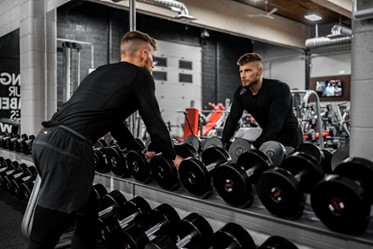Rick Gazzola is a thrill-seeker with a love for surfing, skiing, and snowboarding. Rick's adventurous spirit extends to travel, where he's bungee jumped from a hot air balloon and paraglided off Mt. Alyeska in Alaska. He has even participated in the Oak Bluffs Shark Tournament, showcasing his competitive nature. In the following article, Rick Gazzola of Salem explores effective fitness training strategies for runners and lifters, focusing on key principles, techniques, and considerations to enhance performance and achieve success.
Fitness training encompasses various elements, each crucial for achieving desired outcomes. It's not merely about putting in the hours; it's about adopting a holistic approach that integrates dedication, strategy, and tailored methods to unlock one's full potential.
For runners, optimizing performance goes beyond pounding the pavement. It involves meticulous planning of training regimens, incorporating elements such as speed work, endurance runs, and recovery sessions. Tailoring these strategies to individual goals and fitness levels is key to steadily improving speed, endurance, and overall performance.
Similarly, lifters must design workouts that align with their objectives, whether it's building muscle mass, increasing strength, or enhancing muscular endurance. This involves selecting the right exercises, sets, and repetitions while progressively overloading muscles to stimulate growth and adaptation.
Ultimately, success in fitness training hinges on the ability to customize approaches to suit individual needs and goals. By integrating dedication, strategic planning, and a comprehensive outlook, athletes can optimize their training efforts and unlock their full potential, achieving peak physical condition and performance.
Goal Setting: Setting clear, measurable goals is the foundation of any successful fitness training program. Whether it's improving endurance, increasing strength, or enhancing speed, identifying specific objectives allows runners and lifters to tailor their training regimen accordingly and track their progress over time.
Progressive Overload: Rick explains that progressive overload is the concept of gradually increasing the intensity, duration, or volume of training to stimulate continuous adaptation and improvement. By progressively challenging the body with increasingly demanding workouts, runners and lifters can avoid plateaus and continue making gains in performance.
Periodization: Periodization involves dividing a training program into distinct phases or cycles, each focusing on different aspects of fitness (e.g., strength, endurance, power). By varying training variables such as intensity, volume, and frequency over time, periodization optimizes performance gains while minimizing the risk of overtraining and injury.
Interval Training: Interval training involves alternating between bursts of high-intensity effort, such as sprinting, and periods of active recovery, like walking or jogging. This method effectively improves cardiovascular fitness, boosts speed, and enhances anaerobic capacity, making it particularly beneficial for runners looking to elevate their race performance.
Long-Distance Runs: Long-distance runs are essential components of a runner's training regimen, especially for those preparing for marathon or ultra-marathon events. These extended workouts challenge the cardiovascular system, enhance aerobic capacity, and cultivate the mental fortitude required to endure prolonged periods of physical exertion.
Strength Training: Incorporating strength training exercises is pivotal for runners, serving as a cornerstone for injury prevention and performance enhancement. By targeting key muscle groups such as the core, glutes, and leg muscles, runners can improve overall running efficiency, stability, and power output. Strengthening these areas not only reduces the risk of injuries but also enhances running mechanics, leading to improved performance on the track or trail.
By integrating these strategies into their training routines, runners can optimize their physical capabilities, overcome performance plateaus, and strive towards achieving their personal best in races and competitions. With some guidance, runners can embark on a journey of continuous improvement, pushing their limits and reaching new milestones in their running endeavors.
 Fitness Training Strategies for Lifters
Fitness Training Strategies for LiftersCompound Lifts: Rick Gazzola of Salem explains that compound lifts, such as squats, deadlifts, and bench presses, are foundational exercises that engage multiple muscle groups simultaneously. These compound movements stimulate muscle growth, increase strength, and enhance overall functional fitness.
Progressive Overload: As mentioned earlier, progressive overload is key for continual progress in strength training. Gradually increasing the weight lifted, the number of repetitions, or the training volume challenges the muscles and promotes hypertrophy (muscle growth) over time.
Periodization: Applying periodization principles to strength training helps prevent plateaus and optimize gains in muscle mass and strength. Periodizing training cycles with phases focused on hypertrophy, strength, and power allows lifters to target different aspects of muscular adaptation and achieve balanced development.